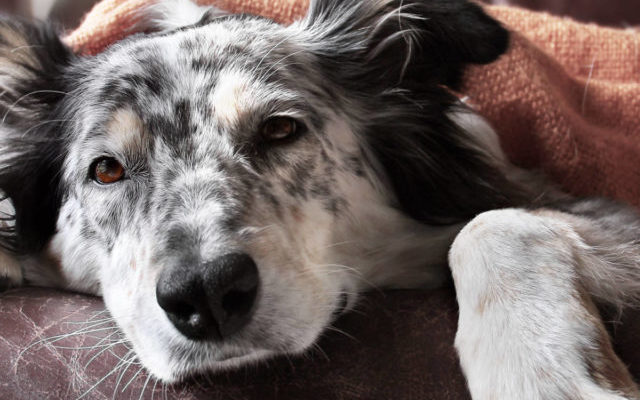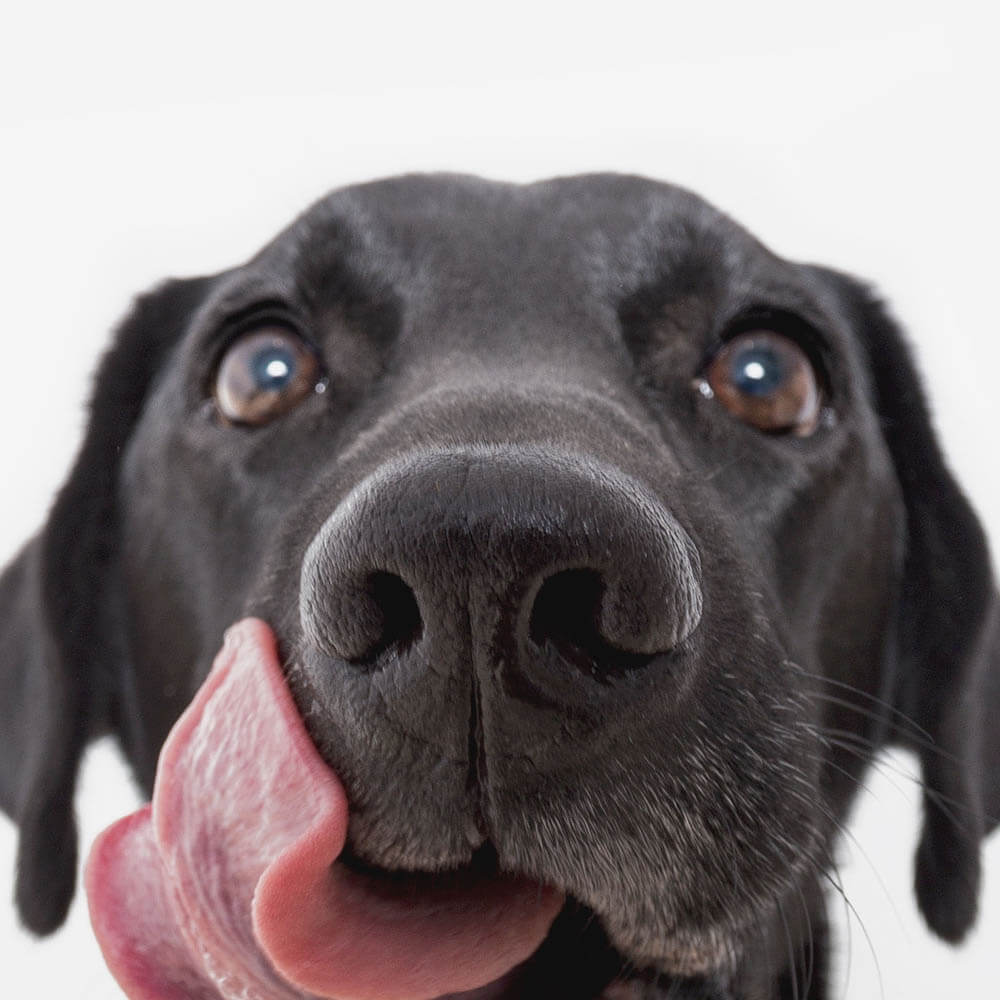iHeartDogs is reader-supported. When you buy via links on our site, we may earn an affiliate commission at no extra cost to you.
Anyone who has experience living with a dog knows that on occasion, dogs vomit. If it’s a one-time thing it is probably nothing to worry about…unless it is landed on that brand new rug. (Yikes.) However, if your pup throws up more than once in a short amount of time or seems to throw up all the time, it can be worrisome and pretty unpleasant for everyone involved.
When we humans find ourselves vomiting we tend to think, “it must be something I ate!” It is the same with our canine companions, and it isn’t always an obvious culprit like trash or grass. We have gathered up expert advice on the topic from our friends at Nom Nom. With their help, we can share 6 food-related reasons that dogs vomit and what you can do to stop or prevent future episodes.

#1 – Gastroenteritis
When your dog’s stomach lining or intestines become irritated and inflamed, vomiting, diarrhea, or both can result. This can happen when your dog ingests non-food items, rotten food, or any number of things that don’t agree with your dog’s body.
The great news is that vomiting due to gastroenteritis typically resolves all by itself. To avoid another episode of vomiting, have your dog fast for 12-24 hours. Dogs can go longer than most people think between meals without any adverse consequences. That extra time with an empty stomach may be just the ticket to give the stomach and intestines time to rebound. Of course, you should not withhold water but give small amounts frequently to avoid overfilling of the stomach. If the vomiting persists, call your vet.
#2 – Transitioning to New Food Too Quickly
If you have recently changed your dog’s diet, your dog could be vomiting because you did not transition the food slowly enough. Especially when transitioning from kibble to a fresh food diet, it is important to give the gut a full week to adjust to fresh food. To do this, you will feed a mix of old and new food over the course of about a week, with the ratio of new food getting bigger as the days go by.
Nom Nom makes the transitioning process very easy for new customers switching to fresh. Inside the first box, there is an instruction manual with details on how to properly transition your pet from their old food to Nom Nom.
#3 – Food Allergy or Intolerance
Food allergies are an immune system response to foods that can cause skin problems like itching, hot spots or rashes as well as gastrointestinal issues such as loose stools or vomiting. Food intolerances have similar symptoms but the immune system is not involved. If you’ve given your dog something out of the ordinary to eat or a new formula of dog food and they vomit almost immediately, it could be because they are allergic or intolerant to one or more of the ingredients. Things can be a bit tricky, though, because an allergy could take 3 days to manifest in your dog and show symptoms.
The best way to determine what food is causing a reaction is to conduct a food trial. Nom Nom recommends feeding your dog a pure and limited ingredient diet for 8 weeks, after which you will slowly introduce suspected offending foods back into the diet. Once your dog reacts, you will know which food is causing the problem. Full steps to conducting an elimination diet (or food trial) can be found here along with additional information about dog allergies.

#4 – Bilious Vomiting Syndrome (BVS)
If your dog vomits a yellow green color that does not have any undigested food in it, it may be that your dog has Bilious Vomiting Syndrome (BVS). Dogs with BVS seem to have a reaction to their own stomach bile, especially if they have an empty stomach. Some dogs with BVS also have reflux from the intestines, which further upsets the stomach. If your dog vomits this way in the morning or evening before you have a chance to feed, it could be BVS.
Dogs with BVS can experience less frequent vomiting by eating small, frequent meals. Instead of feeding morning and evening, you may have to divide the daily calories over 4 small meals throughout the day, with the last coming just before bedtime. If you suspect your dog has BVS, talk to your vet.
# 5 – Pancreatitis
This condition occurs when a dog’s pancreas becomes inflamed, either a single time or chronically. The pancreas secretes enzymes that break down fat. This can come about in a few ways. If you change your dog’s diet to one with much higher levels of fat without giving proper transition time, your dog may develop pancreatitis. Also, if your dog eats a single snack or meal that is super high in fat, like a bowl of bacon grease, it can lead to pancreatitis.
Dogs with pancreatitis vomit repeatedly and have other symptoms like lethargy, bloat, fever, and loss of appetite. To prevent pancreatitis be sure to transition to new diets slowly, as described above. It is not completely understood why some dogs cannot tolerate fats and have chronic pancreatitis. Those dogs usually have to permanently switch to a low-fat diet.

#6 – Eating Rancid Dry Dog Food
Most people don’t realize that kibble begins going bad the moment the package is opened and the food is exposed to air. The bits are sprayed with oils and those oils go rancid, faster than you might expect. Eating rotten kibble can be unappetizing and cause your dog to vomit. You may even find that your dog refuses kibble all together at times. That could be because the food has gone bad and your nose just isn’t strong enough to detect the rot.
If your dog eats kibble, the best practice is to keep it in its original package in a cool, dry place. If it will take your dog longer than two weeks to eat the entire bag, freeze the excess.

Let Nom Nom Help You Make the Transition to Fresh
Fresh food is by far the healthiest choice for your dog. Although we cannot guarantee that your dog won’t dig last night’s pork chop from the trash and throw it up later, we can guarantee that Nom Nom will help you make the transition to fresh food in the easiest way possible. Once you make the switch, the guesswork of what and how much to feed will be gone! You will receive step-by-step instructions on pre-portioned meals to make the one-week transition to fresh. After that, your dog’s full serving of fresh, nutrient-dense food will come to your door ready to be served. Just open and pour! If you are ready to make the switch, take 50% off your first order of Nom Nom for the iHeartDogs community.
 Toledo, United States.
Toledo, United States.